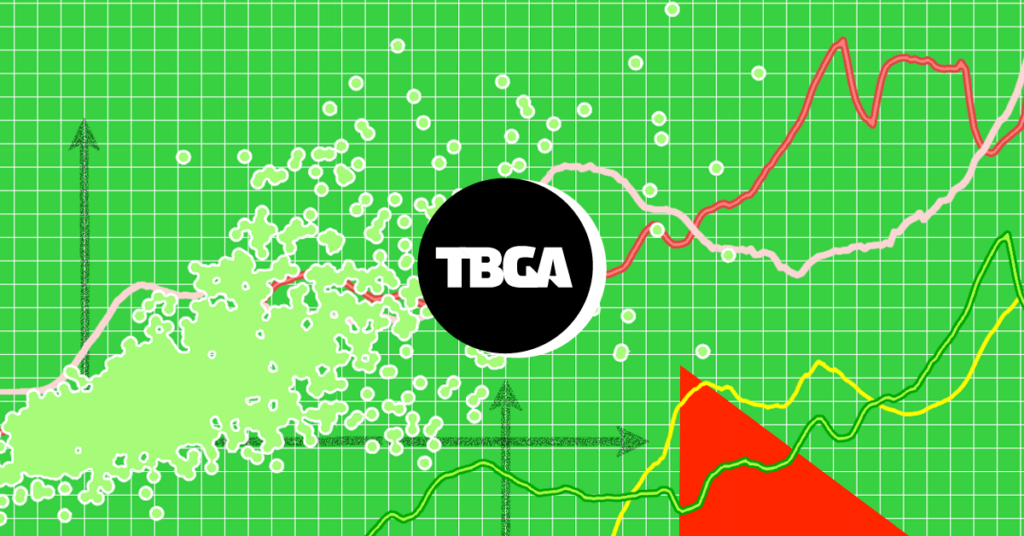
Data Visualization: Trusting the Numbers
A Confluence of Disciplines
Data visualization is a hybrid form of communication. Statistical, historical, editorial, sociological, and mathematical inputs can all be aspects but above all, it is a visual form. And when we consider that our brain is primarily an image processor, not a word processor, data visualization starts to make a lot of sense. Data Visualization makes large data sets and complex computations more comprehensible and is quickly becoming an essential tool for truth-based storytelling and an integral part of design vernacular.
“Data can be very persuasive—powerful enough to change users’ everyday behavior, especially when the data is informative, clear, and actionable.”
—Edward Tufte
Visualized data is persuasive. When stating a case, the graphic application of empirical data attracts the eye and challenges the mind, not only assisting with perception, but in understanding structures and relations.
Take for instance, the groundbreaking work that W.E.B. DuBois produced for the Exposition des Nègres d’Amérique, 1900 Paris exhibition. DuBois and his team disrupted popular Darwinist narratives by tracking and presenting overlooked cultural patterns and illuminating them in statistical charts and infographics for the exhibit. The researchers at Atlanta University, produced modern graphs, charts, maps and photographs that brought to light a new story of African American culture post-emancipation, despite “Lynching” and the “Proscriptive Laws”1 of Jim Crow. They used bold colors and distinct graphic forms to present information that might otherwise be passed over in the dim halls of the exhibition. Careful and deliberate curation of content encouraged the viewer to understand the diversity and humanity of the freed black population within an international context hence challenging the status quo.
So, what’s the story?
As DuBois so astutely understood, for data to be powerful, it’s important to find meaning in the numbers. The word “story” can be unsettling because it implies embellishment or a misinterpretation of the data—a view that can be justified if analysts do not approach the data with prudence, care, and respect. Choosing which data to illustrate and how to frame it are key to “telling the story”.
There are many different types of charts in the data visualization lexicon. It is important to carefully weigh your options and choose the appropriate form in order the data is easily understood. For maximum impact, approach the content with an editorial and design-minded eye, then let the data speak for itself.
When framing the visualization, simplicity is key. Relevant titles and minimal text will help orient the viewer. The most critical information should be at the beginning of the text. Most importantly, the visualizations should illustrate trends and relationships quickly and easily, efficiently transmitting information out of a database and into the viewer’s head.
Successful Data Visualizations:
- Tell a story
- Accurately represent data from reliable sources
- Are shareable and easy-to-understand
- Provide relevant and interesting information to the stakeholder
- Catch the viewer’s attention quickly with:
- content
- headline
- color
- form
But just as well-executed data visualization can improve trust, poorly presented data can destroy it. When companies gather information and leverage it for veiled purposes, it destroys trust. Ultimately, it is up to the viewer to resist blindly accepting visualizations as hard fact and scrutinize the source of the data as legitimate or not.
Successful brands understand the importance of transparency and avoiding distortion when sharing data. Clarity, precision, and efficiency are key to visualizing data and pushing us one step closer to information equity. The end goal should be for all consumers to have access to fair and unbiased information.
“We are ready to question the impersonality of a merely technical approach to data and to begin designing ways to connect numbers to what they really stand for: knowledge, behaviors, people.”
—Giorgia Lupi
Authenticity goes a long way in a media- and advertising-driven world. Showing your clients that you want to provide them with transparent and informative data makes rapport stronger. Visual data shows purpose, encourages comparison, and makes complex behaviors and statistics relatable. The more closely the visualization aligns with the statistical and verbal descriptions of a data set, the better. Audiences respond to context, and visualizing data helps tell a story. Aside from making complex content more accessible and changing minds with empirical observation, data visualization helps build roadmaps that drive results.
When people are drawn into a story, they become a part of it and connect. With data visualization, people don’t see stats and data, they see themselves and how the story affects them.
1Titles taken from the chart Valuation of Town and City Property Owned by Georgia Negroes 1870-1900, W.E.B. DuBois for the Exposition des Nègres d’Amérique.
